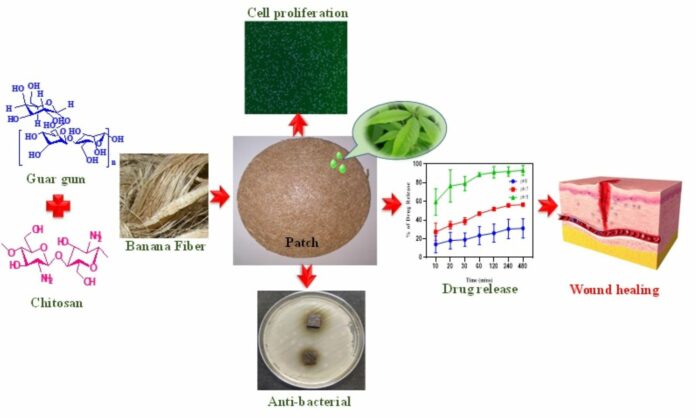Bio-composites are special materials made of natural resources that can be renewed, like plants. They’re perfect for the environment and have essential qualities. For example, they can break down naturally, work well with living things (like our bodies), and are safe for cells. These properties are helpful for bio-medical applications, including wound healing.
Scientists at the Institute of Advanced Study in Science and Technology (IASST) have created something new and exciting. They made a natural material for wound dressings using banana pseudo stems, which are usually thrown away after harvesting bananas.
Led by Prof. Devasish Chowdhury and Prof. (Retd) Rajlakshmi Devi, the team worked with Mridusmita Barman, a research scholar in a particular program between IASST and Deakin University. They mixed banana fibers with biopolymers like chitosan and guar gum to make a particular patch. This patch is really strong and has antioxidants, which are good for your skin.
They also added a plant extract from the Vitex negundo L. plant to the patch for better performance. This plant extract helps release medicine slowly and fights bacteria, making the patch even more effective for treating wounds. The great fact is that every material used to make this dressing is natural and easy to find locally. This means the process to make it is simple, cheap, and safe for people and the environment.
Prof. Chowdhury said, “This investigation opens the door to a new era in wound healing, offering a low-cost, reliable, and environmentally friendly alternative that holds significant potential in biomedical research. The banana fiber-biopolymer composite dressing could revolutionize wound care with its broad applications and positive impact on health and the environment.”
Journal Reference:
- Mridusmita Barman, Sazzadur Rahman et al. Banana fibre-chitosan-guar gum composite as an alternative wound healing material. International Journal of Biological Macromolecules. DOI: 10.1016/j.ijbiomac.2024.129653
